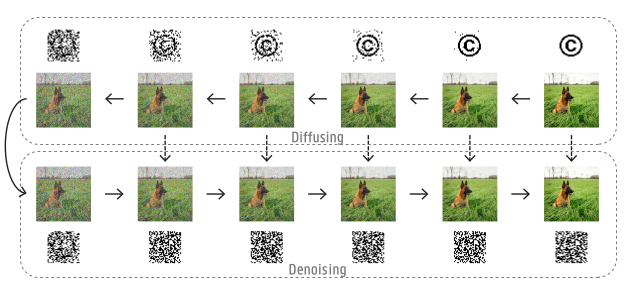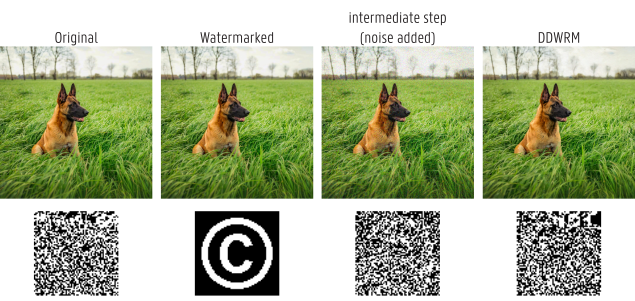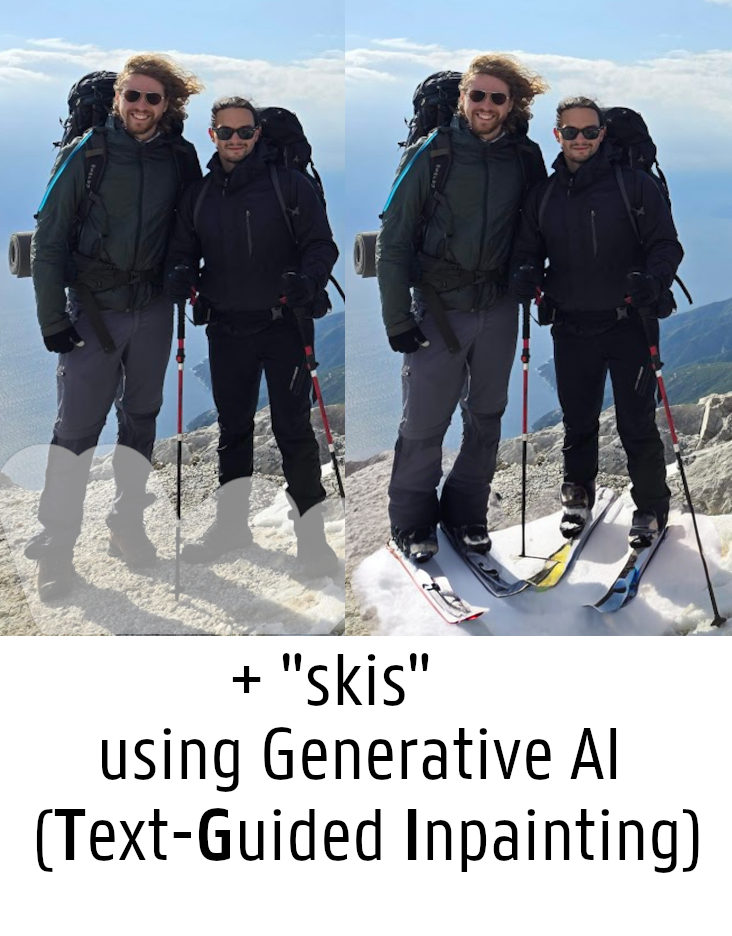We are happy that our paper titled “Diffusion Denoising Watermark Removal Models to Attack Invisible Image Watermarks” was accepted at the Int. Conference on Signal Processing and Communication Systems (ICSPCS) 2024. This work is based on the master thesis of Kobe De Muelenaere “Using Diffusion Models to Attack Image and Video Watermarks”.
Imperceptible image watermarking methods strive to balance visibility with robustness requirements in order to protect copyright images from copyright infringement without impacting consumer’s viewing experience. Additionally, image generators such as Stable Diffusion and Google’s Imagen utilize watermarking to enable the detection of synthetically generated images. To guarantee a sufficient level of robustness, watermarking methods are evaluated against traditional attacks. We recognize diffusion models as a potential disruptive technology in the watermark robustness field and therefore investigate this approach.
This paper presents Diffusion Denoising Watermark Removal Models (DDWRM) as a watermark attack. Instead of generating images from noise, our approach strategically diffuses watermarked images, followed by a denoising process to effectively remove embedded watermarks while preserving the original content. The methodology is designed to be generic, showcasing its potential as a robust and versatile watermark removal technique.
 Architecture of the proposed DDWRM. First, in the diffusing step (upper row, right to left), noise is iteratively added to a watermarked image to obstruct the watermark. Then, in the denoising step (lower row, left to right), the noise is iteratively removed to improve the image quality, but without re-introducing the watermark.
Architecture of the proposed DDWRM. First, in the diffusing step (upper row, right to left), noise is iteratively added to a watermarked image to obstruct the watermark. Then, in the denoising step (lower row, left to right), the noise is iteratively removed to improve the image quality, but without re-introducing the watermark.
 Side-by-side comparison of original, watermarked, diffused, and denoised (DDWRM attacked) images.
Side-by-side comparison of original, watermarked, diffused, and denoised (DDWRM attacked) images.
Experimental results highlight the proposed DDWRM’s success in removing watermarking information, outperforming traditional methods for specific watermarking techniques (DWT-DCT-SVD and RivaGAN). However, variations in resilience, particularly with DWT-DCT, prompt further exploration needs.
In conclusion, our proposed method emerges as an innovative and effective watermark removal model. As diffusion-driven models continue to advance, DDWRM’s potential for enhanced performance underscores the growing need for more resilient image watermarking strategies.
Paper: Diffusion Denoising Watermark Removal Models to Attack Invisible Image Watermarks







